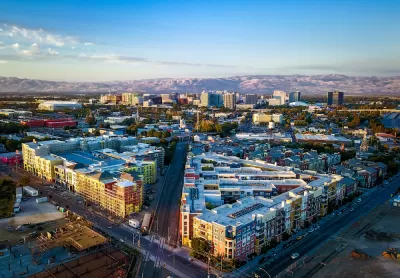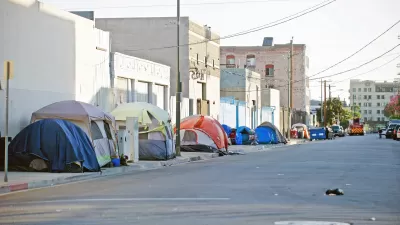Fighting a continued rise in homelessness in the region, a county program is successfully helping families avoid eviction.

According to an article by Patrick Sisson in Bloomberg CityLab, Santa Clara County’s Homeless Prevention System, or HPS, an eviction prevention program, has helped reduce homelessness and provide a crucial safety net for families in the San Jose area. “Researchers at the University of Notre Dame in South Bend, Indiana, who studied HPS found that 81% of those who enrolled were less likely to experience homelessness within six months.” The study also found that each $1 spent on the program returned $2.47 in community benefits, and almost all (95 percent) of recipient families remained in stable housing.
As Sisson explains, “HPS is part of a proliferating family of interventions predicated on the notion that the cheapest way to address homelessness is by keeping struggling tenants from being turned out on the streets in the first place.” The program offers more flexibility than other assistance programs and has no spending caps.
While the program can only serve as a stopgap in a region with a growing affordable housing shortage, the positive results show that no-strings-attached programs can help keep families in stable housing and address homelessness before it happens. However, broader issues continue to plague California’s housing market. In 2023, homelessness in Santa Clara County grew by 24 percent.
FULL STORY: In Pricey Silicon Valley, a Plan to Preempt Homelessness

Planetizen Federal Action Tracker
A weekly monitor of how Trump’s orders and actions are impacting planners and planning in America.

Congressman Proposes Bill to Rename DC Metro “Trump Train”
The Make Autorail Great Again Act would withhold federal funding to the system until the Washington Metropolitan Area Transit Authority (WMATA), rebrands as the Washington Metropolitan Authority for Greater Access (WMAGA).

The Simple Legislative Tool Transforming Vacant Downtowns
In California, Michigan and Georgia, an easy win is bringing dollars — and delight — back to city centers.

In These Cities, Most New Housing is Under 441 Square Feet
With loosened restrictions on “micro-housing,” tiny units now make up as much as 66% of newly constructed housing.

Albuquerque’s Microtransit: A Planner’s Answer to Food Access Gaps
New microtransit vans in Albuquerque aim to close food access gaps by linking low-income areas to grocery stores, cutting travel times by 30 percent and offering planners a scalable model for equity-focused transit.

This City Will Pay You to Meet Your Neighbors
A North Kansas City grant program offers up to $400 for residents to throw neighborhood block parties.
Urban Design for Planners 1: Software Tools
This six-course series explores essential urban design concepts using open source software and equips planners with the tools they need to participate fully in the urban design process.
Planning for Universal Design
Learn the tools for implementing Universal Design in planning regulations.
Smith Gee Studio
City of Charlotte
City of Camden Redevelopment Agency
City of Astoria
Transportation Research & Education Center (TREC) at Portland State University
US High Speed Rail Association
City of Camden Redevelopment Agency
Municipality of Princeton (NJ)





























